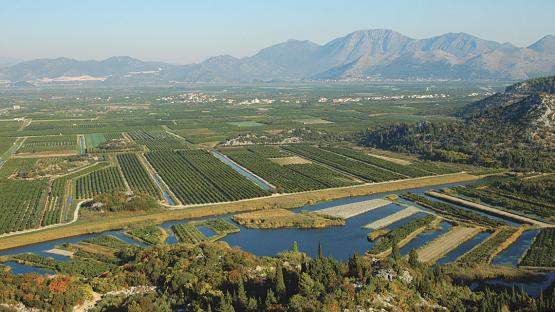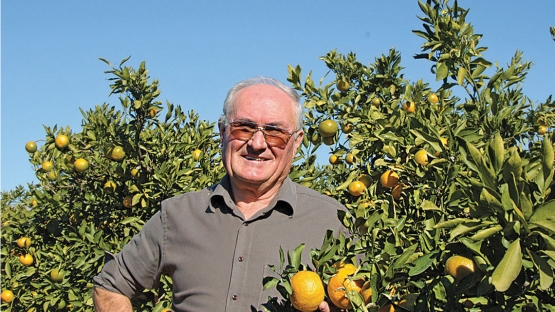A 2010 pilot effort to use the sterile insect technique (SIT) to control an endemic Mediterranean fruit fly pest population in the mandarin-growing region of the Neretva Valley in southern Croatia proved very successful with the support of the Joint FAO/IAEA Division. After two years, the area under SIT application had 75 per cent less damage than the non-SIT area, which prompted quadrupling the target area from 1 000 to 4 000 hectares (ha). The expansion had the support of the entire Croatian industry in this region, including growers, packers and exporters. In fact, one of the packers made space available to receive 30 million sterilized male Mediterranean fruit fly pupae each week from mass-rearing facilities in Israel and Spain. The effort has continued to pay off. In 2012 and 2013, it allowed farmers to reduce insecticide use in the extended area covered by SIT by 20 000 litres per year and to decrease damage from the Mediterranean fruit fly by 96 per cent compared to the non-covered area. Furthermore, larval infestation in export shipments decreased to 0.2 per cent, leading to the decision by growers and authorities to gradually expand SIT coverage to the entire production area of 8 000 ha in the valley.
The Neretva River delta in southern Croatia was once a wetland, but the area was reclaimed and is being used for mandarin orchards – a unique fruit so important to the economy of the area that 90 per cent of the local population is involved in the citrus industry. The area is about 12 000 ha, with one third devoted to mandarin which flourishes there while the rest remains as wetlands and has other uses. The area currently produces around 80 000 tonnes of mandarin a year, of which 70 per cent is exported, mainly to northern Europe and Russia.
Until recently, the growers accepted that, in spite of the intensive application of insecticides, they would lose about 30 per cent of their crop every year due to damage caused by Mediterranean fruit flies. The situation became more complicated when the protected wetlands that surround the production area were recognized as an important migratory route of European birds and wildlife, which meant a need for minimizing the use of pesticides. In addition, Croatia is now part of the European Union which has restrictions on pesticide use and on pesticide residue levels in fruits – restrictions that are expected to become even more stringent in the future.



